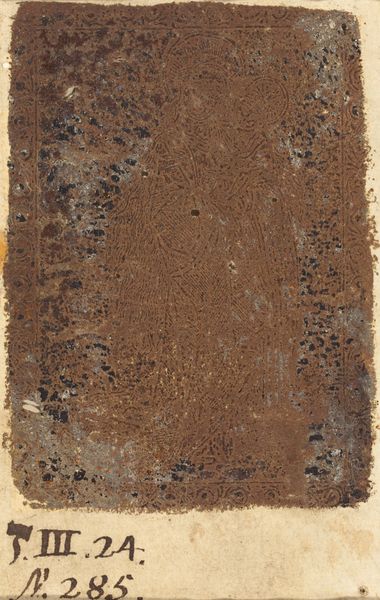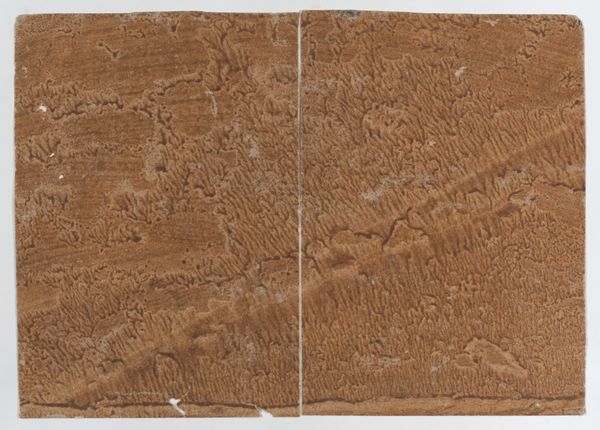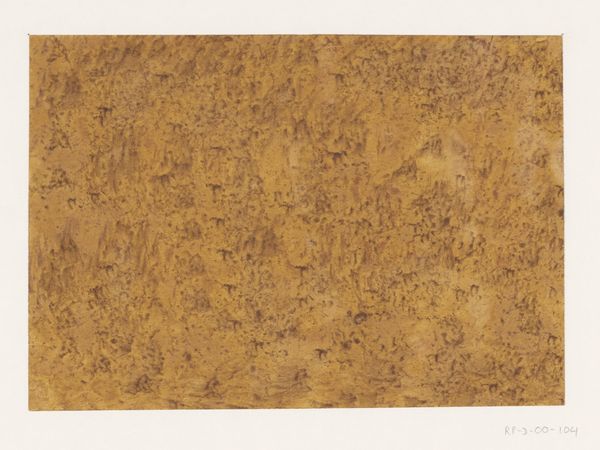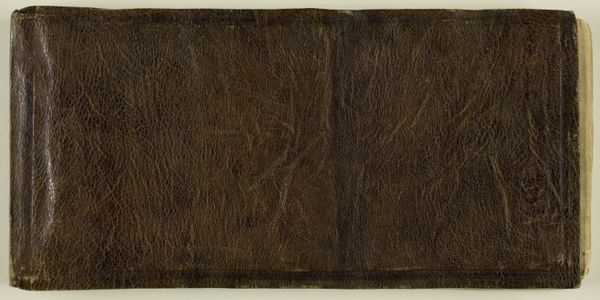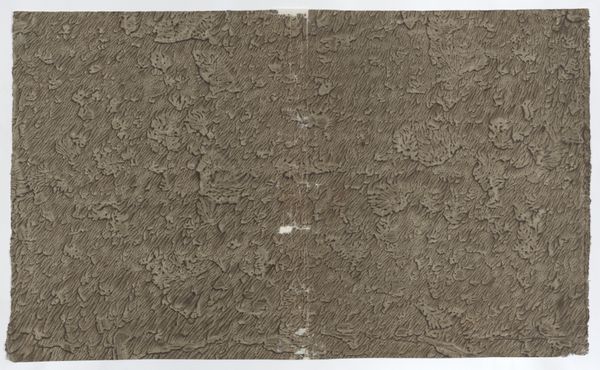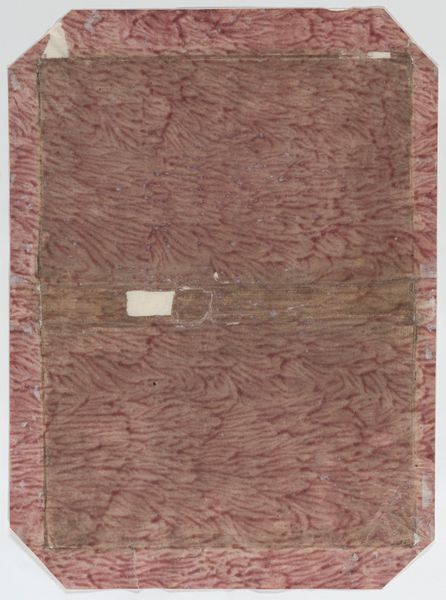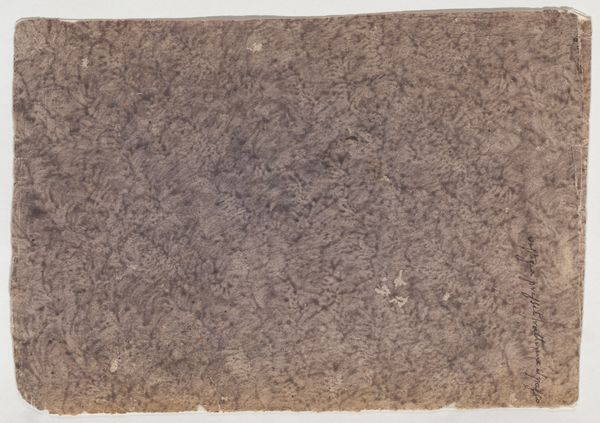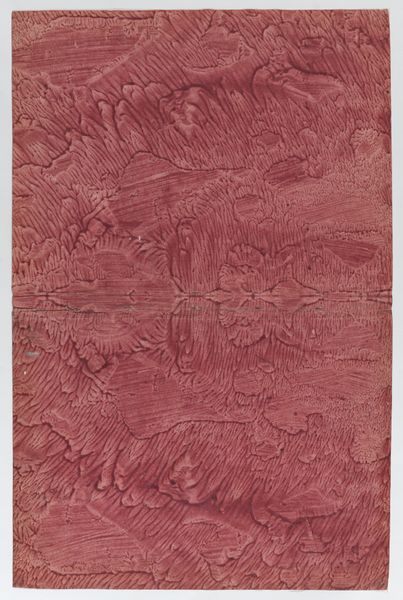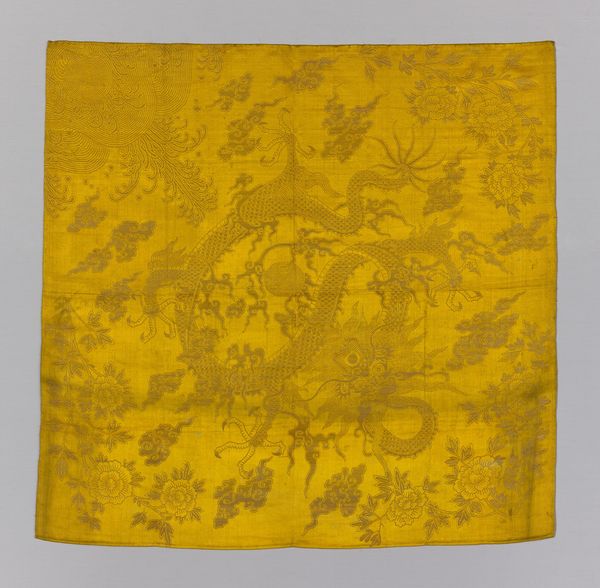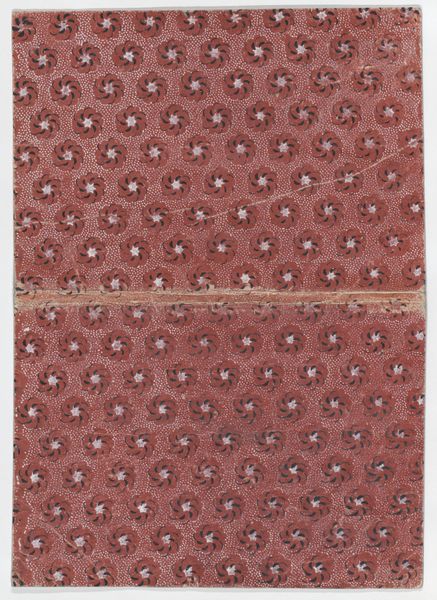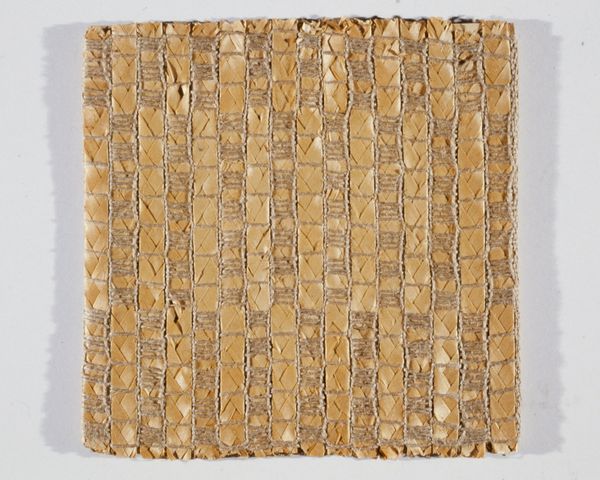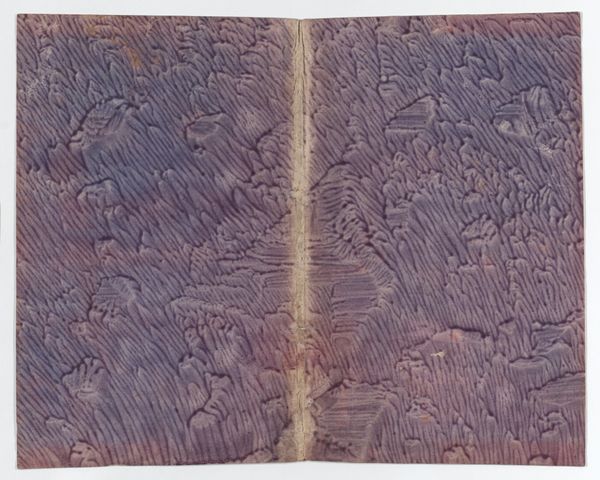
drawing, mixed-media, print, textile, paper
#
drawing
#
mixed-media
# print
#
textile
#
paper
#
folk-art
#
abstraction
#
decorative-art
Dimensions: Sheet: 5 9/16 × 5 3/8 in. (14.2 × 13.7 cm)
Copyright: Public Domain
Curator: Standing before us is an intriguing piece: an anonymous reddish-brown paste paper, likely dating from the 18th century. It’s currently held here at the Metropolitan Museum. Editor: It’s deceptively simple at first glance. The monochrome palette gives a feeling of warmth, almost like worn leather or old wood grain. What really strikes me is its tactile quality—I can almost feel the texture. Curator: Paste paper as a technique was prevalent during this era, particularly in decorative arts. Consider the broader cultural context: books and decorative objects became increasingly accessible to the middle class, which fuels a demand for ornamentation. Artisans developed relatively economical methods to achieve visually compelling results. Editor: That's a great point. There is a beauty and simplicity here – born from necessity. We should also remember, that even objects considered ‘decorative’ or ‘folk art’ were made by someone, likely working long hours within certain labor conditions that shaped production. What story do you think this particular piece might hold? Curator: Its possible this would have been used as book covers or endpapers. There's an interesting circular cut-out on one edge that suggests some function of fitting onto something else. We often underestimate the amount of paper consumed in daily life as material culture of the 1700's exploded. Editor: It makes you think about ephemerality. A decorative element intended to be attractive and practical ends up a historical fragment conveying more about lost lives than luxury paintings or statues do. This little snippet feels more honest than a formal portrait could ever achieve! Curator: Indeed! We can consider its relationship to design movements during that time and their function as important signifiers for societal changes. Editor: Agreed. It underscores the power of material culture. A humble, utilitarian artwork reveals so much about our understanding of work, class, taste and production of eighteenth-century visual art! Curator: The beauty is precisely in its quiet functionality. It provides valuable context for an understanding of period life beyond only noble portraits and battle scenes. Editor: Precisely! I am grateful for these little slices of life.
Comments
No comments
Be the first to comment and join the conversation on the ultimate creative platform.
